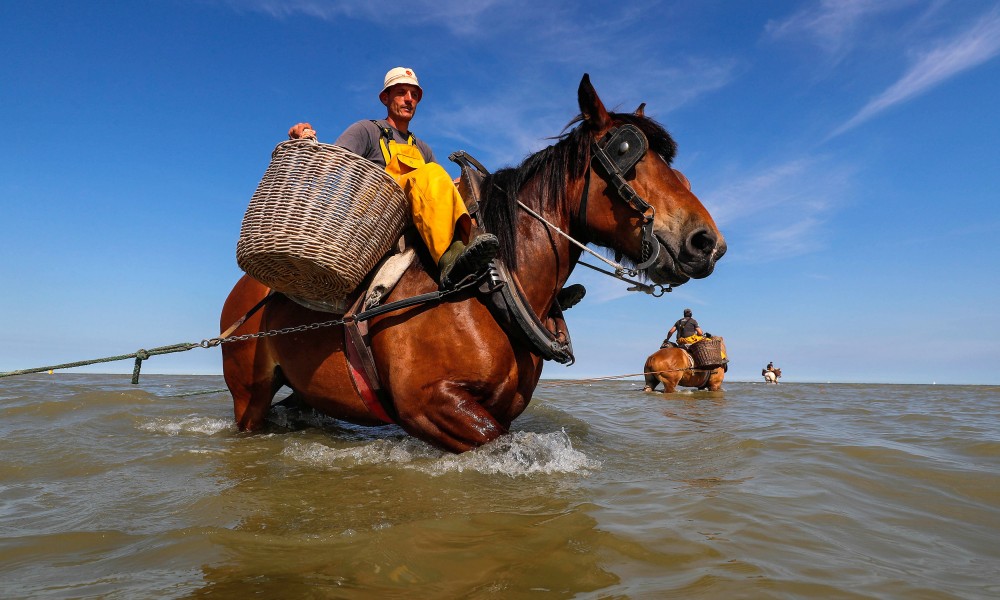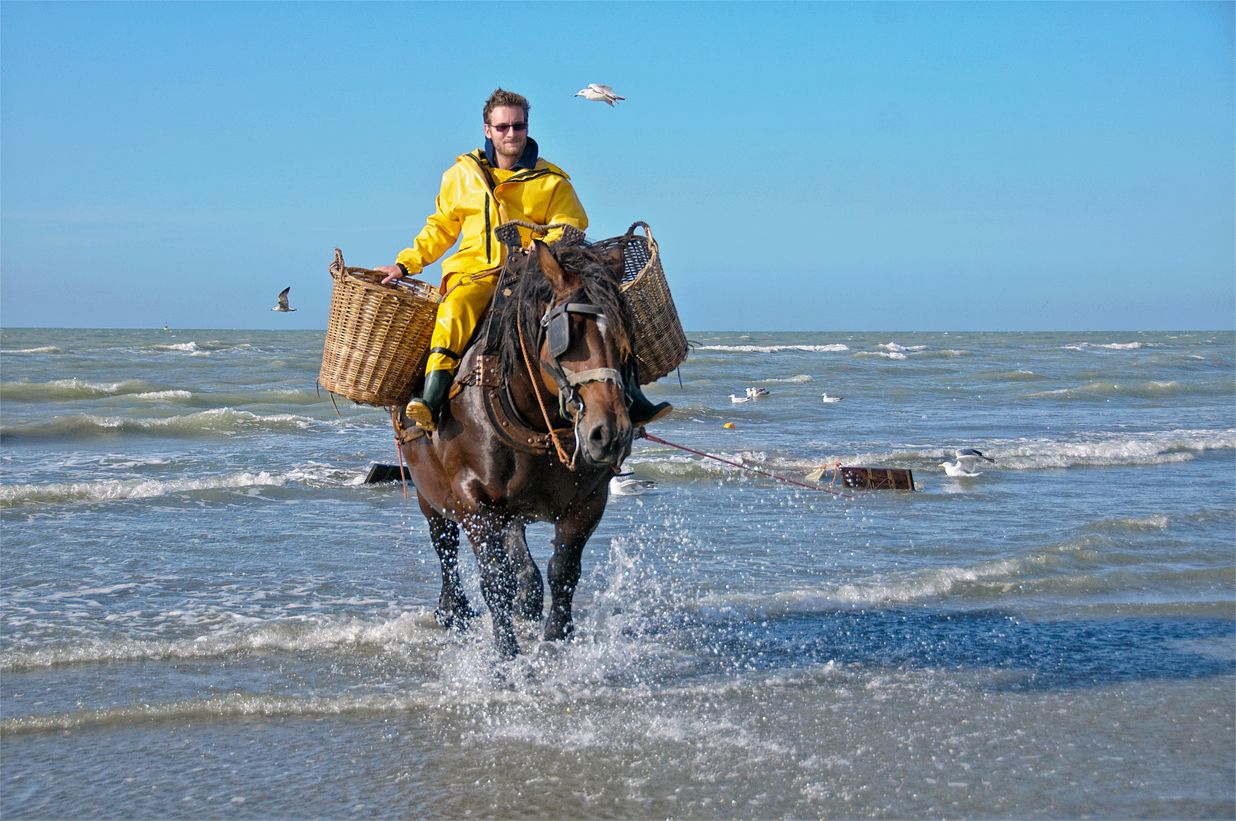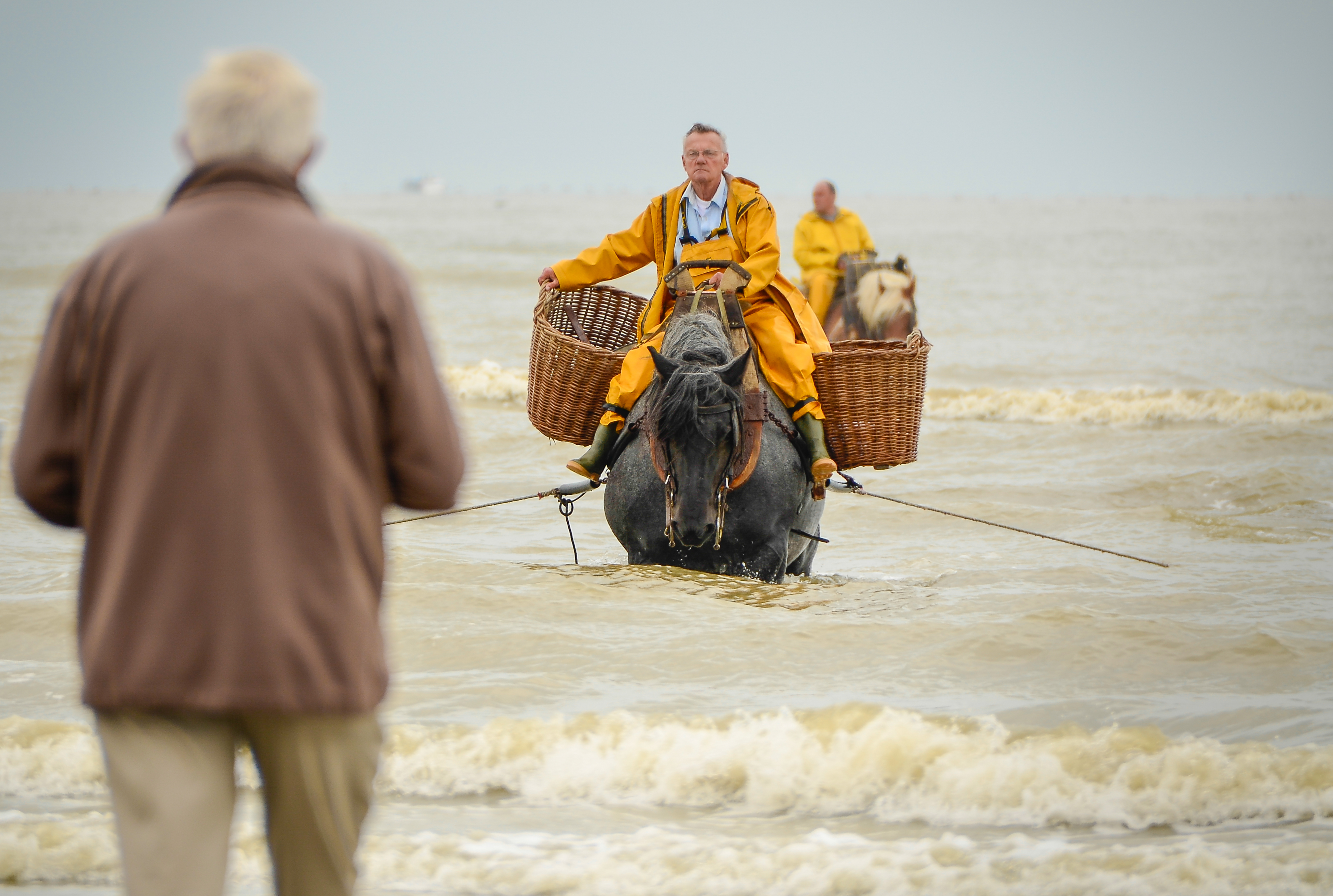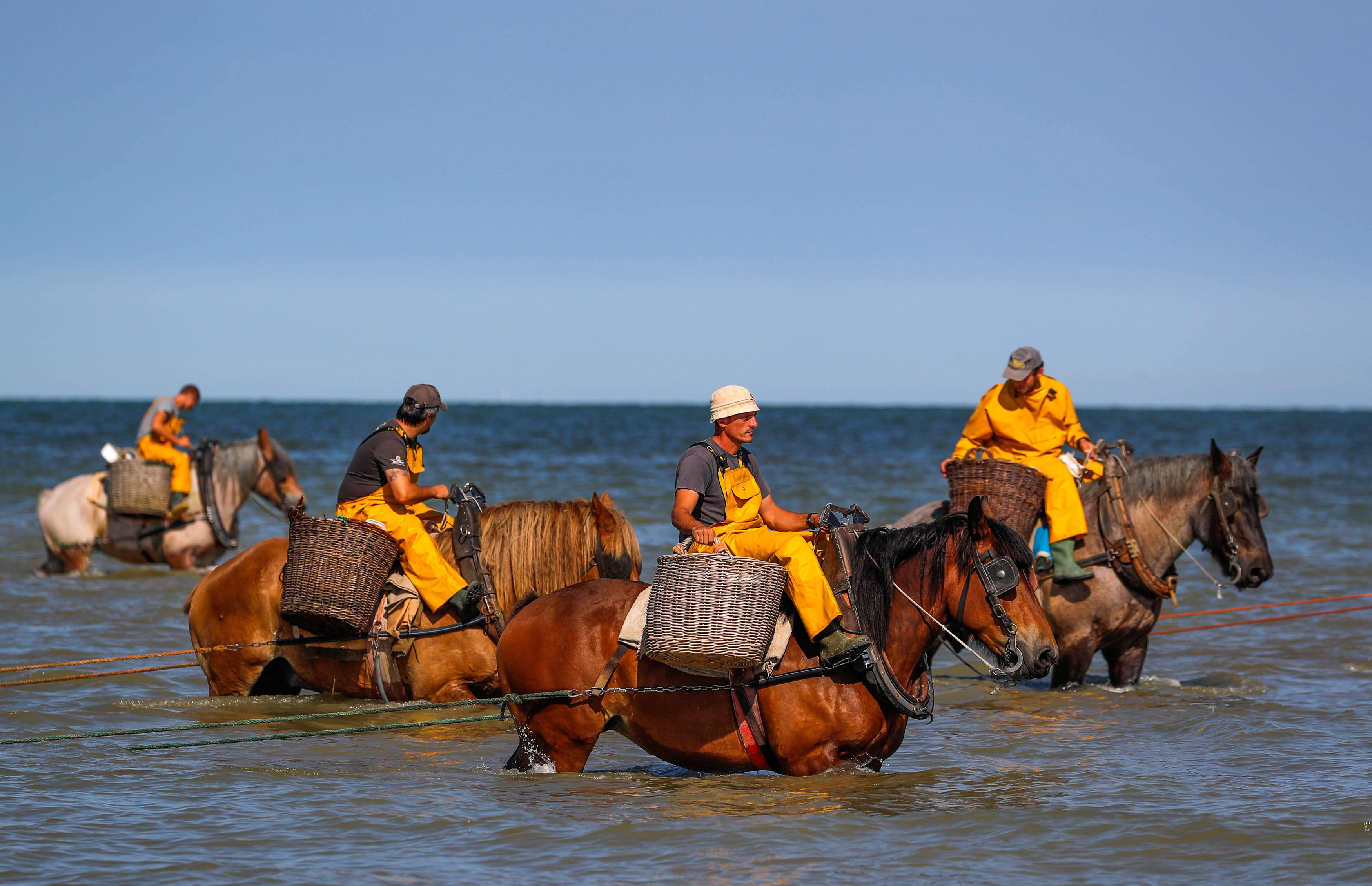Shrimp fishing at Oostduinkerke: Horses for courses

History of this tradition dates back to the 16th century. It was then, more than 500 years ago, when this craft originated. Once common, fishing nets used to stretch along all coast of modern Belgium, the Netherlands, and part of France and England. Over time, more and more fishermen began to dismount from their horses, moving towards new technologies, adapting to the era of mass fishing and agricultural industries, and thus throwing their nets with entangled perennial traditions to the corners of their huts. Photo xcook.info
Photo xcook.info
Today there is only one place in the world where shrimps are still hunted by catchers on horseback – Belgian coastal town Oostduinkerke. This beautiful dune area is like a page from some old fishing encyclopaedia, where you can read a short reference article, and a small photograph helps understand it, and recreate in imagination everything left beyond text. Season of horseback shrimping lasts from March to late November. Several times a week, in the morning time, men begin to prepare equipment. They load a large wooden cart with fishing nets, baskets, sinkers, work wear, sieves and harness their horses.
Robust sturdy horses with muscular legs of Flemish Brabant breed look not as high and graceful as some of their counterparts, but they are unreplaceable members of the industry. These durable, hefty Brabant horses have enormous strength to cope with seawater resistance and multi-kilogram cargo. Many Brabant have short stumps instead of lush tails. Flapping tails prevented anglers to see the road from cart, so they cut tails. Over time, such actions were recognized as inhumane and banned.
Read also: Belgian lace: Waltz of a thousand threads
Fish hunters hit their road. Although their way lasts several hours, everyone is in time to get a sleep coast. Oostduinkerke sea has an ideal destination for shrimping. Fishermen riders have only three hours for trawling the sea at low tide: 90 minutes they catch crustaceans in low water and 90 minutes after low water.
The workers unfold equipment, pull over their clothes typical rubberized oilskins and overalls of traditional bright yellow colour, which according to legend discourages large sea creatures and attracts good weather.Huge wicker baskets are attached to both sides to the saddle. The horse fishermen start trundle down the beach. Фото pinterest.com
Фото pinterest.com
Horses go to sea and advance at a steady pace dragging the conical net, two ends of which are linked rectangular board. Water spreads boards in different directions, which prevents fouling net up, and creates a kind of funnel. There is also a chain attached to the net that stretches along the sandy bottom and creates vibrations, causing shrimp to jump and thus be scooped into the nets.
After half an hour of work, when the nets grow heavy, the horses turn for shore. While horses are resting, the men empty their catch of shimmering shrimp into sieves, sifting out the unwanted crabs, fish, jellyfish and the other marine life tossed back to the sea. Kilograms of a special variety of grey shrimp go into baskets, which are taken home after trawling. They repeatedly wash a daily catch in clean water and then it is cooked in a large pot with salted boiling water. Cooked crustaceans are spread over on a large net that allows boiled stuff to cool and dry. The taste of exceptionally fresh true sea delicacy nowadays seems unique.
Previously fishing baskets got easy filled up with the harvest so that arrow on scales went beyond mark of 10 and 20 kilograms, but now, in response to the long hours of preparation, trip towards the coast, and toiling there, the sea brings a prey that barely reaches 5 kilograms. Photo afar.com
Photo afar.com
The locals explain it by weakened sea immune system, climate changes, disordered ecosystem and regular intervention of trawlers that are alien to the sea.Today, only a dozen families are engaged in horseback shrimping. There was a critical time when this type of activity could have died out if not for the trio of anglers who recognize it as their duty to keep the tradition alive.
The families always invited children from the surrounding villages. They tell them about the history of the craft, share secrets and skills, treat kids with small sweet delicacies. The hosts are trying to persuade children to understand the importance of local traditions and give the younger generation undistorted true flavour of fresh food.
The families are strongly supported by local authorities. The local officers long ago recognized an ancient and almost lost a tradition as a great legacy, which must continue and is a major asset for Oostduinkerke, Belgium, and the entire world impregnated with innovations. Photo newsbook.com.mt
Photo newsbook.com.mt
From 2013, this ancient way of fishing was included into the Intangible Cultural Heritage of Humanity. So, nowadays Oostduinkerke nets catch not only a tiny, sweet gift from the sea, but numerous tourists. Every year, in early summer, thousands of travellers flock to this region to pay a two-day visit to the Shrimp Festival, an ode to the sea and to shrimps, the main event of which is the shrimp parade held in the streets of Oostduinkerke, with shrimp fishermen on horseback in the spotlight.
Cover photo omgnews.today





















